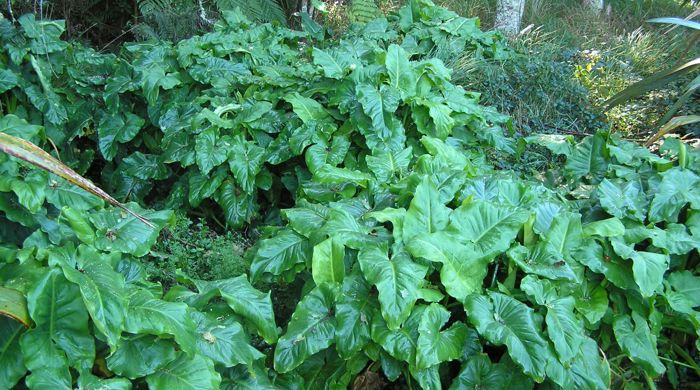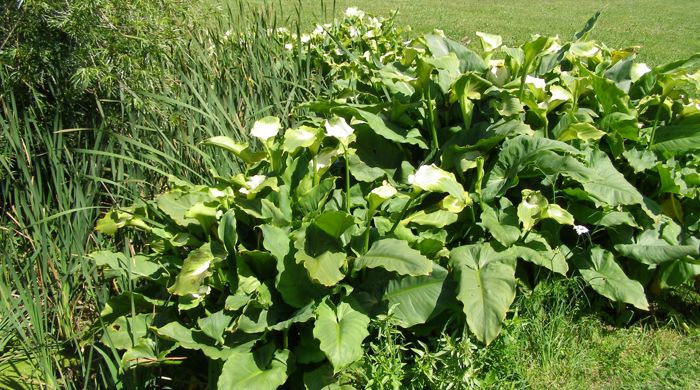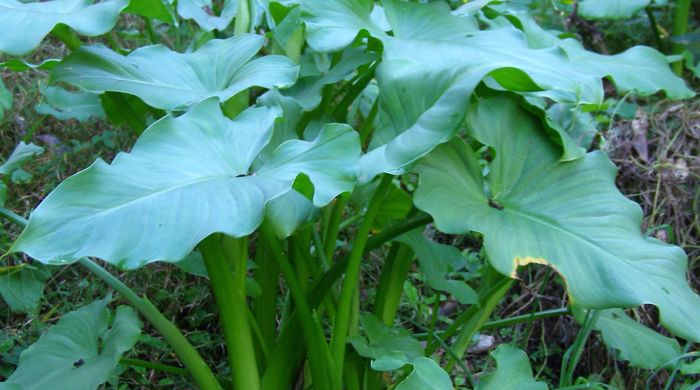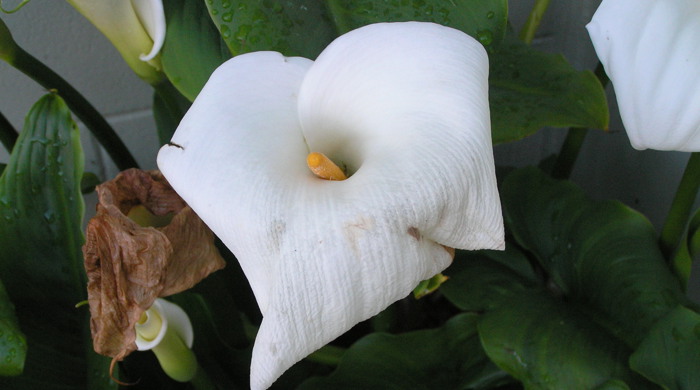Zantedeschia aethiopica
Arum lily
Also known as:
Calla lily
Family: Araceae
Origin: South Africa
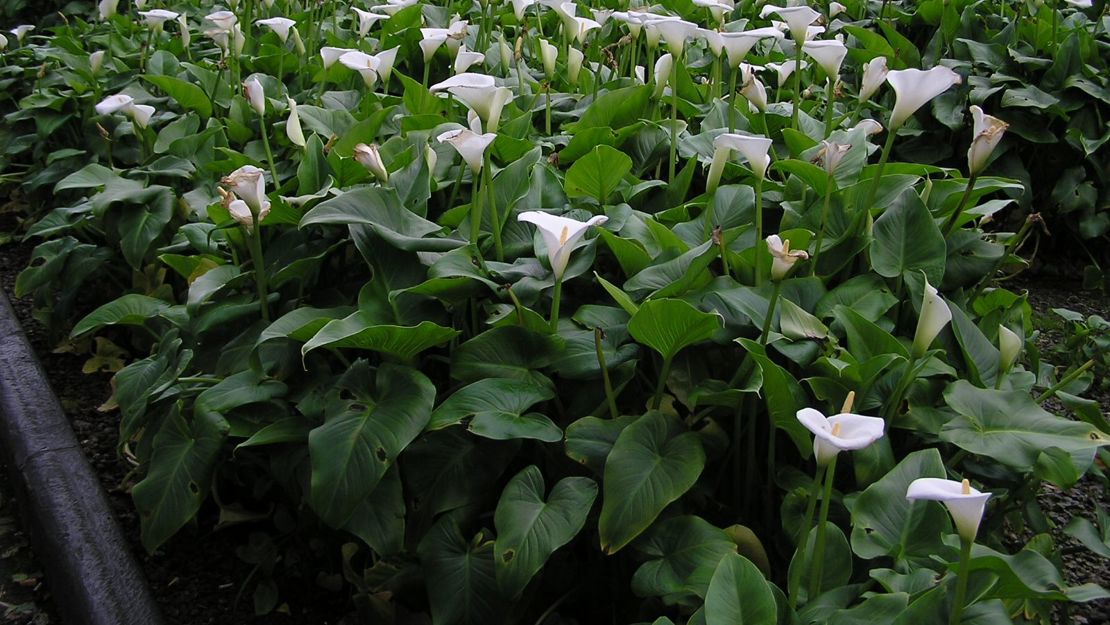
Regional Pest Management Plan (RPMP) status
- Whole region — Sustained control
- National Pest Plant Accord Species
General description
Clump-forming rhizomatous perennial herb < 1.5 m tall. Leaves are arrowhead-shaped, < 30 x 60 cm, dark green, leathery and usually glossy. Flowers are yellow, borne in spikes < 9 cm tall and surrounded by white spathe in winter – summer. Fruits cluster on the lower part of spike and are green/yellow ripening to orange. Note: The National Pest Plan Accord RPMP status only applies to the 'Green Goddess' cultivar.
What you need to know
To help protect our environment:
- You must not breed, distribute, release or sell arum lily within the Auckland region. As the cultivar ‘Green Goddess’ is a National Pest Plant Accord species, these restrictions also apply across the whole of New Zealand for this cultivar.
- You must not plant arum lily within the Auckland region, unless you are transferring an existing plant on your land to another location within the boundaries of the same property.
- You must destroy any arum lily on land that you occupy if it has been planted in breach of the above rules and you are directed to do so by an authorised person.
This applies to all cultivars. Please note the cultivar Green Goddess is already banned from sale nationally, including Auckland.
Habitats
Wetlands, riparian margins, drains, damp ground, pasture, forest, coastal sandy habitats.
Dispersal
Seeds dispersed by birds, livestock and water. Vegetative spread from rhizomes, exacerbated by feral pigs. Human-mediated dispersal through soil movement, dumping of garden waste and deliberate plantings.
Impact on environment
Forms dense patches, excluding other plants in wetlands, riparian margins and damp forest gullies. Displaces valuable pasture species and is toxic to livestock.
Control
Site management
Follow up treated areas 3 times per year. Encourage natural regeneration of native plants or replant treated areas where possible after 2-3 treatments to establish dense ground cover and minimise reinvasion.
Recommended approaches
Physical control
Method: Dig out.
Plant parts requiring disposal: Rhizomes.
Disposal options: Small amounts can be rotted in a covered water barrel or remove to greenwaste or landfill.
Biocontrol
Biocontrol is currently not available for this species.
Community agrichemical control recommendations
No qualifications: For small infestations on terrestrial sites, cut stump and paste freshly cut base of stems with metsulfuron gel.
For small infestations on aquatic sites, cut stump and paste freshly cut base of stems with double strength glyphosate gel.
Basic Growsafe certified: For medium infestations on terrestrial sites, cut stump and spray freshly cut base with 1g metsulfuron-methyl per 1 L of water.
For medium infestations on aquatic sites, cut stump and spray freshly cut base with 250ml glyphosate green per 1 L of water.
Certified Handler/Experienced agrichemical user: For large infestations on terrestrial sites, cut stump and spray freshly cut base with 1g metsulfuron per 1 L of water.
For large infestations on aquatic sites, cut stump and spray freshly cut base with 250ml glyphosate green per 1 L of water.
Caution: When using any herbicide or pesticide please read the label thoroughly to ensure that all instructions and safety requirements are followed.
